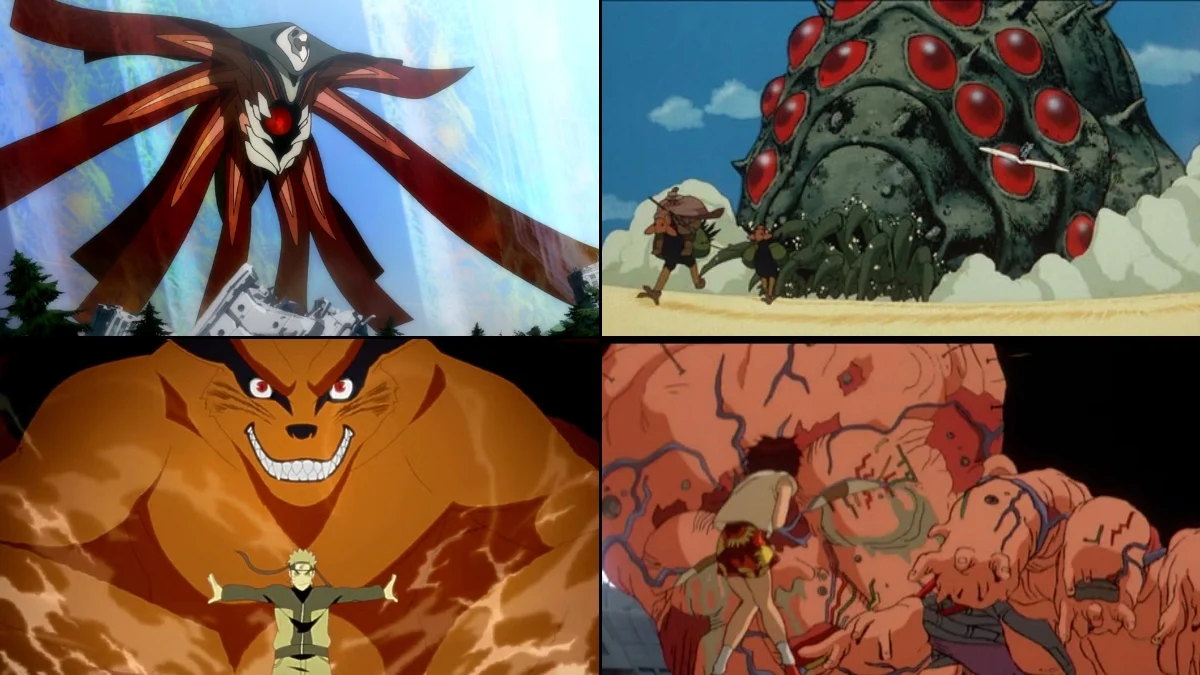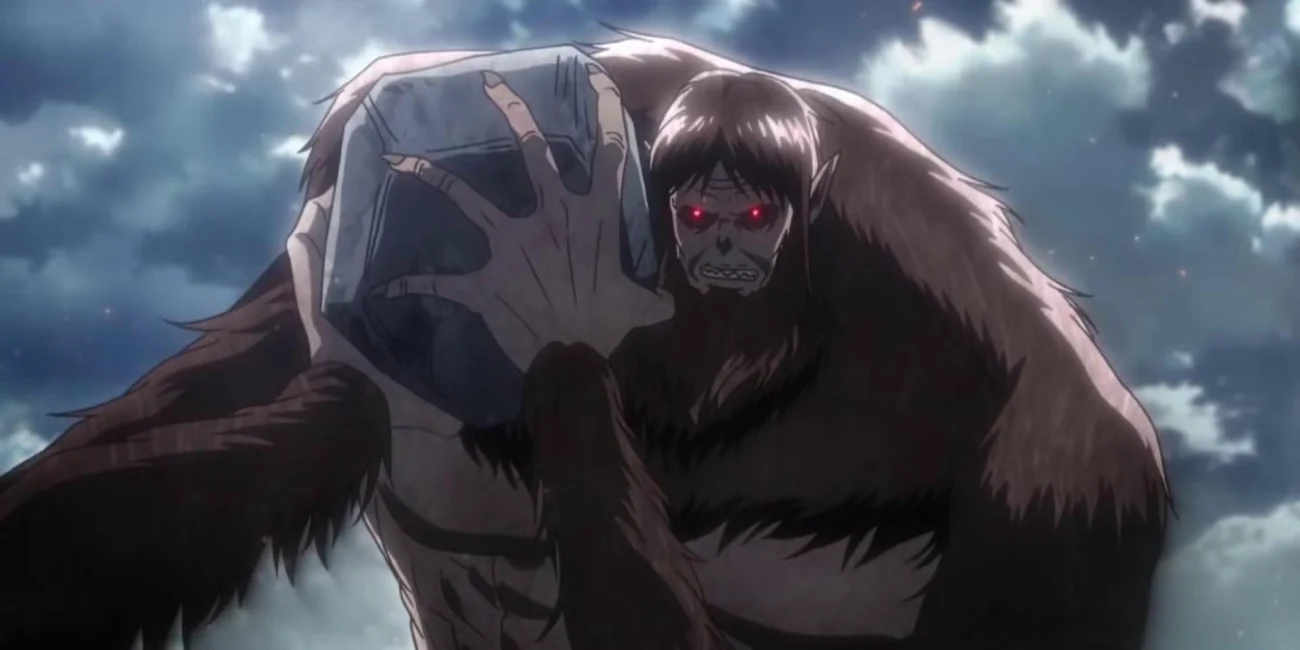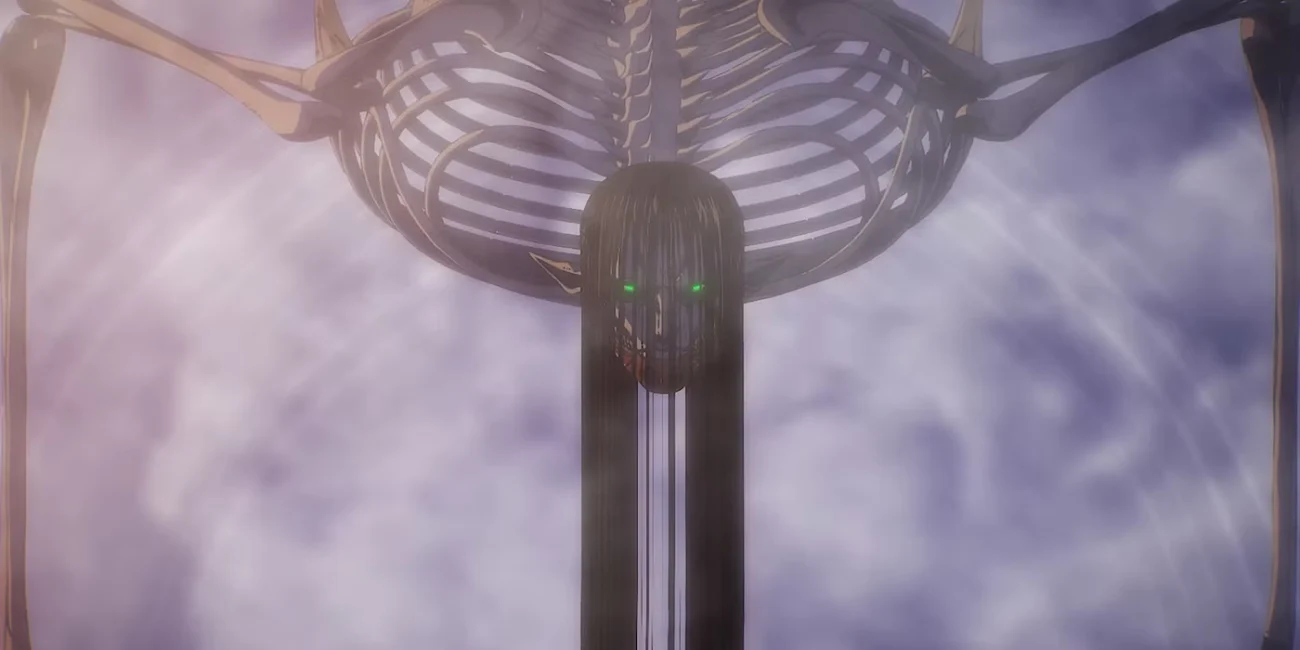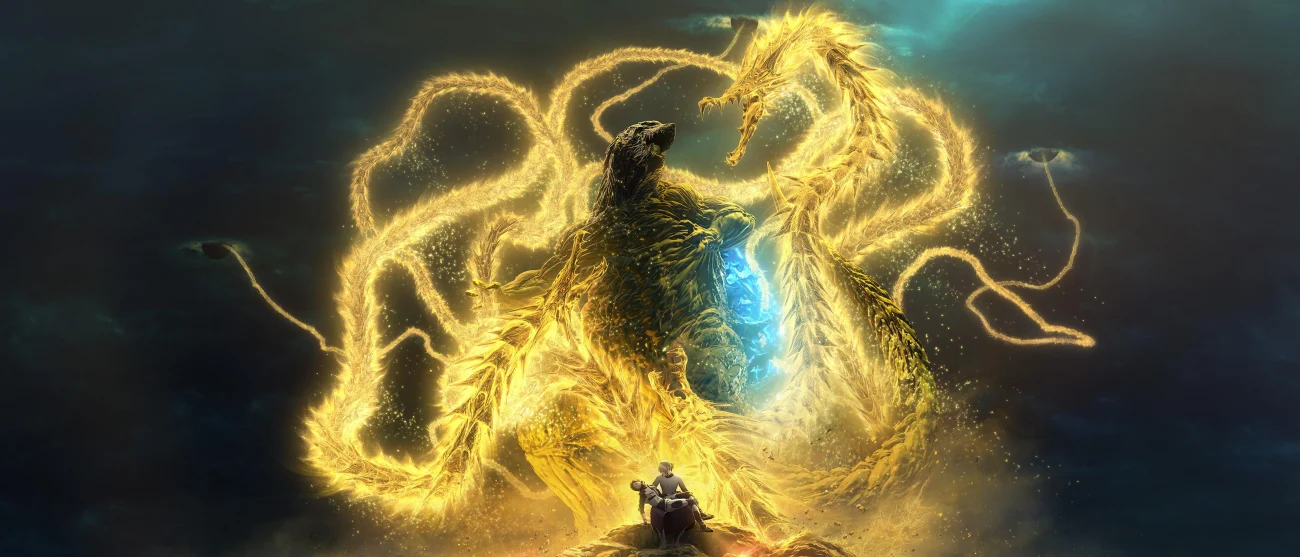
Huge monsters are a core part of anime, famously destroying cities, changing entire worlds, and making heroes question the very definition of strength. Throughout various anime series and movies, creators have come up with incredible creatures – kaiju, titans, angels, otherworldly beings, and legendary beasts – that are just as iconic as the main characters. These aren’t simply large; they come with detailed backstories, complex biology, and established rules that make their stories truly engaging.
Here’s a roundup of fifteen of the most powerful giants, detailing their roles in their respective worlds: we explore their origins, the powers they wield, and the significant impact they have on everything around them. You’ll encounter beings capable of altering family histories, angels who battle using geometric principles, and age-old biological weapons that continue to devastate the land even after their makers have vanished.
Colossal Titan

The Colossal Titan in ‘Attack on Titan’ is unique because of its incredibly fast transformation, which creates a huge burst of superheated steam. This steam can push back enemies and even set things on fire. Being so incredibly tall, it can easily tower over walls, and its powerful muscles and heat allow it to create a blast of hot air – a “vent” – to knock enemies away without needing to move much. The initial explosion from its transformation is like a weapon, instantly destroying any defenses in its path.
Several individuals have possessed this ability, and how it’s used mirrors the Titan-shifter rules seen throughout the series-it relies on spinal fluid, family history, and the user won’t live very long. This form excels at breaking through defenses: it creates openings, uses intense heat and force to overwhelm enemies, and then retreats before regular troops can counterattack. Because it’s so noticeable, it also serves as a clear signal during war, indicating the beginning of large-scale attacks.
Beast Titan

As a huge anime fan, let me tell you about the Beast Titan from ‘Attack on Titan’. It’s instantly recognizable because it looks very much like an ape, and it fights in a really unique way – mostly by throwing things! But these aren’t just any throws; the projectiles are launched with incredible speed and force, basically like artillery fire. What’s even crazier is that the person inside the Titan – the shifter – has a special voice box that lets them give commands to the regular Titans. It’s like they can control them, turning a whole group into a seriously powerful army. And the Beast Titan’s arms and shoulders are built for throwing – they can do it quickly and accurately, again and again, with truly devastating results.
While each user adapts it a little differently, the form consistently provides these benefits: leading troops in the field, keeping enemies at bay with long-range attacks, and directing how titans behave strategically. Within the series’ military strategy, it allows for powerful attacks without needing cannons and initiates battles by breaking up enemy lines before hand-to-hand fighting starts. Essentially, it’s a versatile tool for both offense and control, and titan control is key.
Founding Titan

In ‘Attack on Titan’, the Founding Titan controls people with the power of the Titans – known as Subjects of Ymir – by directly affecting their bodies. This allows it to change memories, give orders to other Titans as if they were a single unit, and even alter the physical traits of an entire population. To activate its abilities, certain family lines are required, and often, contact with someone of royal blood. The Titan’s power works through hidden ‘paths’ that connect all Eldians, letting it exert control instantly, no matter how far apart they are.
The Founding Titan essentially governs through control of people’s memories and physical characteristics, acting as a form of biological rule. National strategies revolve around its status – whether it’s currently active, who possesses it, and how to trigger its powers. This Titan is fundamental to the series’ political structure, functioning more as a valuable asset to be controlled than a typical fighting force. It’s a key to power, not just a weapon.
King Ghidorah

The anime version of King Ghidorah-especially in ‘Godzilla: The Planet Eater’-shows him as a creature with multiple heads connected to strange, otherworldly physics. He enters our world in ways that break the normal rules of cause and effect. While each head can act somewhat on its own, they work together, allowing for attacks from multiple angles and the ability to absorb energy, which overwhelms defenses. He doesn’t interact with regular matter much, or only does so when he chooses, making it difficult to damage him with standard weapons. This unique physiology makes him a formidable foe. His abilities are truly unusual.
This understanding presents Ghidorah as a hunter from another dimension, one that targets civilizations by exploiting religious groups or advanced technology to gain access. The best way to fight it isn’t through direct attacks, but by cutting off whatever is allowing it to enter our world. Ghidorah’s appearances often happen when society is already falling apart, with different groups trying to harness its power to take charge.
Ohmu

The Ohmu in ‘Nausicaä of the Valley of the Wind’ are huge, insect-like creatures that are essential to maintaining the ecological health of the Sea of Corruption. Their multifaceted eyes shift color when they become disturbed, and if angered, they can charge forward together in a destructive rush, overwhelming landscapes and communities. Their bodies are naturally resistant to poisons and they play a vital part in breaking down and reusing harmful substances in their environment.
You can communicate with Ohmu by understanding their feelings or paying attention to changes in their surroundings. Their actions actually show how much trouble the environment is in. People watch where Ohmu travel, changes in the color of their eyes, and the paths they make to try and foresee what will happen. The story uses them to illustrate how very large creatures can help keep things balanced even when the world is damaged and full of poison.
God Warrior

As a longtime fan, I’ve always been fascinated by the God Warriors in ‘Nausicaä of the Valley of the Wind’. They’re not just machines, but actually engineered bioweapons created by a civilization that’s now gone. What’s terrifying is they can unleash incredibly powerful energy blasts that instantly turn land into glass – it vitrifies entire landscapes! When they’re reactivated after being dormant for so long, they’re often unstable. We see their bodies literally falling apart the more power they use. It’s incredible – and frightening – to think that even a partially functioning one can completely reshape an area’s geography.
Recovered items – like ancient relics, protective containers, and devices used to activate them – are considered as dangerous as weapons of mass destruction. In this story, governments and organizations try to control or bring these items back to life, because a working God Warrior could end wars with incredible force. These powerful objects dramatically change how nations approach diplomacy, archaeology, and military planning in the surrounding areas.
Zeruel (14th Angel)

Zeruel, from ‘Neon Genesis Evangelion’, is an Angel characterized by incredibly thin, yet strong, extensions that function as bladed limbs, capable of slicing through even armored opponents from a distance. Its central core is heavily protected, and it can generate powerful energy beams that can break through strong defenses. Unlike many Angels, Zeruel doesn’t focus on dodging attacks; instead, it charges forward, prioritizing a quick and direct assault.
Fighting Zeruel requires a combination of strong defenses, delaying tactics, and well-timed attacks when its arms extend. Since Zeruel can easily break through most fixed defenses, the strategy centers around being able to move quickly, having the Eva units attack together, and taking advantage of brief moments when its central core is vulnerable.
Kurama (Nine-Tails)

In ‘Naruto’, Kurama is a powerful, chakra-based creature known as a tailed beast. It possesses incredible destructive power, heals quickly, and can create things like tails and arms using its chakra. Special sealing techniques can restrain or divide Kurama’s chakra, allowing a host to use some of its power, but only under specific rules. Furthermore, Kurama’s strong emotions can affect both its surroundings and the person who is hosting it.
Ninja villages carefully plan how to contain or use Kurama, focusing on training those who host his power (jinchūriki) and developing battle strategies. They use medical and sensory ninja to monitor chakra levels for any changes, and international agreements treat tailed beasts like Kurama as powerful deterrents, similar to nuclear weapons. Kurama’s chakra can be divided and given to others, which can significantly improve a team’s strength during important battles. This allows for flexible tactical options and a boost in overall fighting potential. Effective management of Kurama is therefore crucial for any village seeking to maintain power and security.
Great Ape (Oozaru)

In ‘Dragon Ball’, the Great Ape transformation happens in Saiyans who have tails when they’re exposed to enough Blutz Waves – either from a full moon or an artificial source. This change massively increases a Saiyan’s size, strength, and resistance to damage, and also makes their energy attacks more powerful. However, the tail remains vulnerable; if it’s removed or injured, the transformation can be canceled, or the user can be disabled.
From a strategic standpoint, when a character transforms into Oozaru, opponents are immediately faced with battles that span entire cities, along with dangerous environmental effects like powerful shockwaves and cracks in the ground. Ways to fight back include stopping the Blutz Wave, cutting off the tail, or using energy attacks specifically aimed at the Oozaru’s joints and senses. Training programs and devices like scouters are essential to prepare for the massive increase in power that comes with this transformation.
Zunesha

Zunesha, from ‘One Piece’, is a massive, ancient elephant that endlessly wanders the ocean, with the island of Zou resting on its back. To communicate with Zunesha, one needs the Voice of All Things, and it moves based on instructions from a distant source – suggesting it’s fulfilling a long-term punishment or magical obligation. Its immense size-both height and leg length-allows it to walk through deep water while still supporting an entire civilization on its back.
Naval forces chart shipping routes to avoid Zunesha’s movements, while the Mink Tribe has built their entire culture to endure the ocean spray, strong winds, and ground shaking caused by its every step. If given the order to fight, Zunesha can strike with its trunk, delivering a blow powerful enough to completely rearrange entire fleets in one go. Simply put, its presence significantly impacts both politics and trade throughout the surrounding waters.
Sea Kings

Sea Kings in One Piece are gigantic creatures living in areas like the Calm Belt, and they consistently endanger regular ships. While they come in different shapes and sizes, they all have incredible strength, powerful bites, and are much tougher than most sea animals. Certain people with Conqueror’s Haki, or those who can communicate with them in special ways, can sometimes control or work with Sea Kings, allowing for a brief period of peace or cooperation.
Technology used at sea-such as hulls made of seastone and ships powered by paddles-developed partly to help avoid detection by Sea Kings and to work around areas with no wind, where these creatures are common. Mapmakers chart where Sea Kings live, and navies use strategies like bigger ships, distractions, and traveling in closely spaced routes to lessen the chance of running into them. This makes sailing the open ocean a difficult strategic problem for most groups.
Menos Grande (Gillian)

In ‘Bleach’, Menos Grande are the weakest type of Menos, but they’re still incredibly large, dwarfing entire cities. They’re created when many Hollows combine to form a single, giant creature that wears a mask. These beings attack with Cero energy blasts, which can cause widespread damage. Inside, they struggle for power like a hive of insects, and sometimes this internal conflict allows them to evolve into stronger types of Menos. While they move slowly, their long reach and attacks that affect a large area make them dangerous opponents.
Soul Reapers view Gillians as dangerous foes, responding with either teams of skilled fighters or the direct involvement of captain-level officers, depending on the situation. When confronting them, the goal is to interrupt their energy-gathering process and shatter their masks, releasing the spirits trapped inside. Their appearance indicates a weakening of the barrier between worlds, leading to efforts to contain them and investigate any increase in the number of Hollows. These events trigger both immediate action and deeper investigations into the cause of the instability.
Gauna

The Gauna in ‘Knights of Sidonia’ are creatures that live in space. They have a central ‘placenta’ and are covered by protective ‘ena’ layers. They often group together to form enormous shapes, much larger than human spacecraft. Because they quickly become resistant to weapons, special lances and explosives are needed to break through the ena and destroy their core. Their unique biology allows them to travel vast distances in space and survive in the vacuum without needing to eat or breathe like normal creatures.
Our defense against the Gauna depends on deploying mecha in coordinated attacks, focusing on precise timing after they break through the outer defenses. The Gauna are incredibly adaptable, able to disguise themselves as humans or combine into massive, colony-sized forms. This constant evolution requires us to continually improve our strategies and develop new materials on the Sidonia. We concentrate our planning on ensuring we have enough ammunition and accurately tracking the Gauna’s core during complex, multi-directional attacks.
Tetsuo’s Amorphous Form

In ‘Akira’, Tetsuo’s psychic powers spiral out of control, resulting in a shapeless, constantly growing mass that swallows buildings and machines. This growth happens because his cells rapidly multiply, driven by his psychic energy, and it ignores the body’s natural limits. As the mass expands, any mechanical parts caught within it become permanently melded into the structure, changing how it moves and functions.
Efforts to control the situation focus on separating the affected area, getting civilians to safety, and trying to calm Tetsuo’s powers using psychic countermeasures or precise attacks. This event highlights the series’ connection between psychic abilities and devastating physical transformations, showing that once certain limits are reached, normal medical or military solutions become impossible. It’s a critical situation, and conventional methods won’t work. Learn more about the phenomenon.
Shin Godzilla (Final Form)

‘Shin Godzilla’ features a Godzilla with a unique biology that allows it to adapt and change its body during battles. This includes releasing dorsal fins in stages and firing a powerful heat beam with great accuracy. If seriously injured, the creature can quickly heal itself and even enter a dormant state to develop new strategies at a cellular level. Its internal processes are like a reactor, providing the energy for continuous, powerful attacks.
The film’s defenses center around substances that cause rapid clotting, delivered through carefully coordinated public works projects. This involves using trains, cranes, and even bombing to hold the creature still, allowing scientists to use chemicals to stop it. Managing the city – including evacuation routes, power supplies, and urban layouts – becomes just as crucial as military force when dealing with this threat in a crowded area.
Do you have a favorite giant monster we didn’t mention, or would you like to add something? Feel free to share your thoughts and opinions in the comments!
Read More
- Broadcom’s Quiet Challenge to Nvidia’s AI Empire
- Trump Ends Shutdown-And the Drama! 🎭💸 (Spoiler: No One Wins)
- METH PREDICTION. METH cryptocurrency
- How to Do Sculptor Without a Future in KCD2 – Get 3 Sculptor’s Things
- South Korea’s KRW1 Stablecoin Shocks the Financial World: A Game-Changer?
- Gold Rate Forecast
- CNY JPY PREDICTION
- 20 Most Cursed Productions in Movie History: From Jaws to Titanic, the Chaos Behind Iconic Films
- Investing Dividends: A Contemporary Approach to Timeless Principles
- Four AI Stocks: A Lyrical Epic in Silicon and Light
2025-10-02 08:23